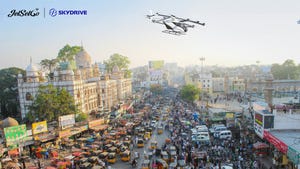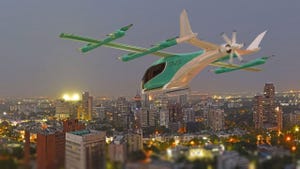Flying Vehicle Startup Funded for Air Ambulance; Hydrogen-PoweredFlying Vehicle Startup Funded for Air Ambulance; Hydrogen-Powered
The vehicle is designed to aid first responders and emergency personnel in reaching Australians living in regional and remote areas
.png?width=1280&auto=webp&quality=95&format=jpg&disable=upscale)
An eVTOL (electric vertical takeoff and landing) company has received funding from the Australian government to develop a hydrogen-powered vehicle.
AMSL Aero plans to use the $3.6 million grant from the Australian Renewable Energy Agency (ARENA) to develop a fuel cell system to power its Vertiia electric aerial vehicle (EAV).
The EAV is designed to aid first responders and emergency personnel in reaching Australians living in regional and remote areas.
“AMSL’s aircraft could become an important tool for emergency services personnel, particularly as we face more frequent natural disasters,” said Chris Bower, minister for climate change and energy. “Green hydrogen and other sustainable aviation fuels are vital to help decarbonize the hard-to-abate aviation sector, now accounting for around 2.5% of global emissions.”
This is not the only EAV targeted at first responders, expected to be among the earliest use cases for the new electric flying vehicles.
For example, Jump Aero recently received $3.6 million in contracts from the U.S. Air Force to accelerate the company’s technology development. Part of the funding is targeted to fund the first full-scale prototype.
.png?width=700&auto=webp&quality=80&disable=upscale)
Credit: Jump Aero
The first orders for the JA1 Pulse electric aerial vehicles (EAV) came from Falck Ambulance Service.
Faulk is a global first-response business with operations in 26 countries.
The JA1 Pulse, in development since 2019, is intended to fly a professional with emergency equipment to unimproved landing zones in rural areas with the aim of reducing emergency response times.
The company promises a speed of up to 285 mph. The military backing comes from the Air Force Research Laboratory, which is the primary scientific research and development center for the U.S. Air Force.
EAVs are being considered for numerous first responder services.
For example, Volocopter, a Germany-based flying vehicle company, recently agreed to partner with Bristow Group in Houston, Texas, to build urban air mobility (UAM) ecosystems, including using the flying vehicles for search and rescue and medevac.
Like what you've read? For more stories like this on flying cars and emerging technologies, sign up for our free daily email newsletter to stay updated!
Read more about:
Flying CarsAbout the Author
You May Also Like








